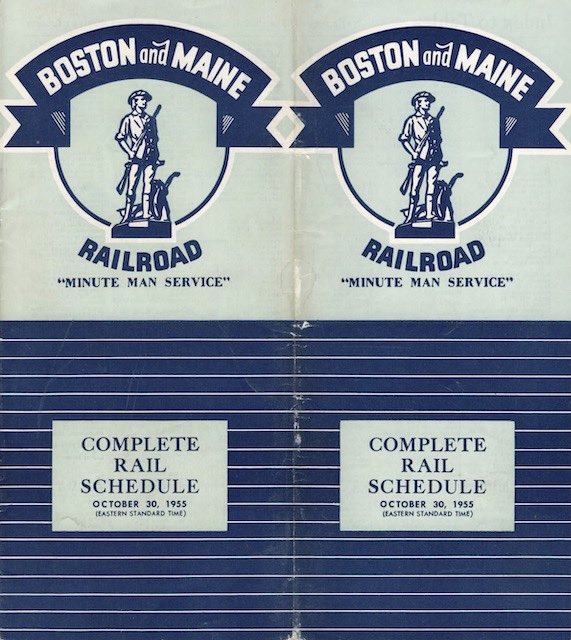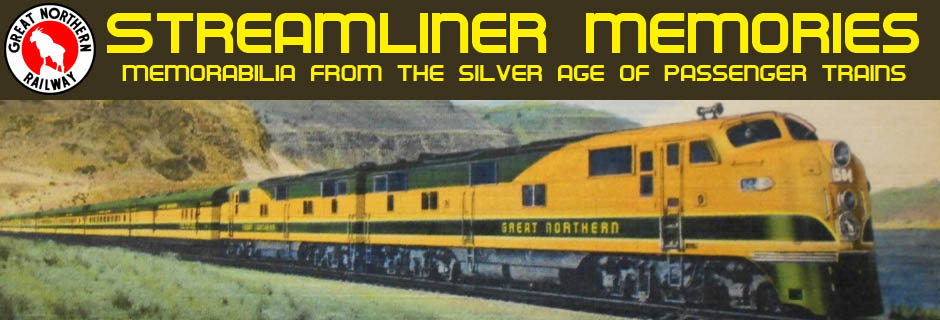Like an octopus, Boston & Maine had tentacles radiating away from Boston to Portsmouth, Portland, Plymouth, White River Junction, Bellows Falls, Troy, Springfield, and Worcester. This timetable was issued just six months after Patrick McGinnis, who controlled the New Haven, had won a proxy battle for control of the B&M.
 Click image to download a 22.6-MB PDF of this timetable contributed by Ellery Goode.
Click image to download a 22.6-MB PDF of this timetable contributed by Ellery Goode.
McGinnis replaced many passenger trains with Budd Rail Diesel Cars, and this timetable brags that the railroad owned the nation’s largest fleet of RDCs and operated “984 trains a week” (though technically it’s not a train if it is just one RDC). The timetable shows 25 trips a day between Boston and Haverhill, 22 a day between Boston and Lowell, 19 a day Boston-Fitchburg, 17 a day Boston-Rockport, 10 Boston-Concord and Boston-Portsmouth, 9 Boston-Portland and Boston-Bangor, and six Boston-Marblehead, Boston-White River Junction, and Boston-Troy. Some of the White River Junction trains went on to Montreal, two via the Canadian Pacific and two via Canadian National.
These numbers include both RDCs and regular trains, many of which were named. When this timetable was issued, B&M operated more than two dozen named trains, often in conjunction with other railroads. These included the Alouette, Ambassador, Ascutney, Berkshire, Cardigan, Connecticut Yankee, Cumberland, Flying Yankee, Kearsarg, Kennebec, Penobscot, Red Wing, Sebago, Skipper, State of Maine, Trojan, and several more. By 1958, McGinnis had replaced most of these trains with RDCs.
McGinnis’ efforts to reduce costs by, among other things, replacing trains with RDCs were unsuccessful. Never very profitable, the B&M began losing money in 1958, and McGinnis himself was convicted and sent to prison for accepting kickbacks in the sale of passenger cars that he had replaced with RDCs. But this timetable shows that, in 1955 at least, the Boston & Maine had one of the most intensive passenger operations in the country.

I don’t know about B & M, but on many railroads even a light engine move is considered a “train” in its own right.
As for the RDCs, I think they were a good idea, just a little too late. A route like LA-Las Vegas could have been viable, and maybe corridor service between LA and Santa Barbara could have worked as well.